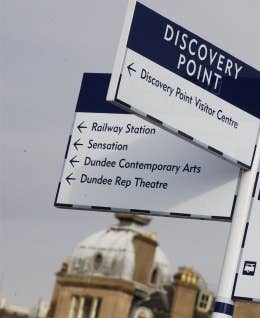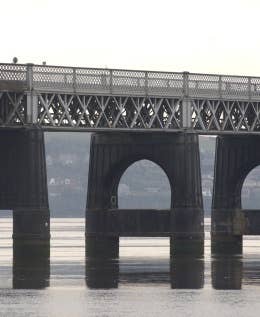Dundee - a city profile
What was once an industrial town has changed a lot in the past decade - but there's plenty more to come
As part of Scotland Week, GamesIndustry.biz set out to find out why Dundee has been so successful at incubating videogames companies - particularly as the city itself has an historical reputation of being a somewhat earthy industrial town.
However, a visit there reveals that a lot has changed in the past ten years and the city has many of the benefits - but few of the drawbacks - of most other cities around the UK.

It is hard to find a reference to the city without words like "change", "new" and "evolve" being used liberally, and indeed this must be due, in part, to the massive renovation the city centre has received over the past few years changing the city's very landscape. More than GBP 300 million of investment in Dundee has been dedicated to helping turn the city into a prime retail, visitor and work destination.
In fact, Dundee's city centre was the runner-up in the Shopping Location of the Year category at the Scottish Retail Excellence Awards in 2006, and is going from strength to strength looking to develop even further.
This has been done to large effect over the past decade, with public and private partnerships, such as the Dundee Partnership and Dundee City Centre Action Group, helping to reshape the city centre's retail landscape.
GBP 7 million had been invested into the city's Wellgate Shopping Centre, by its previous owners HBG properties, modernising the retail space - which was later snapped up in a property deal worth GBP 80.25 million.

The Overgate shopping centre, developed and opened by Lend Lease in March 2000, has been hailed as the catalyst for change in the city. Since opening it has doubled the amount of prime city centre retail space and continues to be visited by 14 million shoppers every year. Such was the shopping centre's impact on Dundee that it is partly credited with helping the city to rise in the Scottish retail hierarchy from eight to fourth place. Overgate looks set to help raise the city further as it looks to expand and draw even more retailers and shoppers into the area.
However, at the heart of much development in Dundee is the river River Tay, on Scotland's east coast, which is part of a huge GBP 270 million, 30-year development plan. During this time it will be freed up from its over-cluttered and dated-looking buildings form the 60's and 70's that currently block its view, and brought back into the city.
Among the major changes to this water artery will be demolition of the tower that currently serves as the local council's headquarters, which local people have voted the city's worst building. The council is planning to move into a new 120,000 sq ft home, scheduled to be ready for 2010, at another location - freeing up valuable riverside land.

The city's cultural standing is also booming, along with its landscape and retail business. The Cultural Quarter in the west end of the city centre is next to Dundee University and is home to the Dundee Contemporary Arts centre and the Dundee Repertory Theatre - the only such theatre in Scotland. The area's independent retailers and eateries benefitted from the GBP 370,000 environmental improvement project by the Dundee Partnership.
Dundee has even attracted the attention of the world-renown architect Frank Gehry, whose buildings are widely sought after by cities and seen as badge of honour. So it is with some pride that Dundee was the site of Gehry's first ever building project in the UK - support home for cancer patients, Maggie's Centre.
The city's technological sector is also experiencing a renaissance with key research companies settling in the Technopose biotech park, yards from Dundee University's campus. Among those to settle in the area is the company Cyclacel, which was joined by Professor Sir David Lane - who discovered the P53 gene, a vital element in the effort to understand more about cancer.

Dundee has also proven a compelling home to much of the interactive entertainment industry, with more than 10 per cent of UK computer games companies based there, employing around 3500 people and generating a combined turnover of GBP 155 million. The local council is hoping to expand on this success by building a GBP 20 million digital media park near the campuses of both Dundee and Abertay universities.
This adoption of technology has benefitted the region as a whole, with nearly 80 per cent of firms in Dundee using it to conduct business, bringing an increase that is 10 per cent greater than the national average.
However, with change comes pain and the region's traditional manufacturing business has been in steep decline. Jobs in the manufacturing sector have fallen to such a degree that it now only accounts for 10 per cent of the Dundee economy - a decline of 4.5 per cent from 14.5 per cent 5 years ago. Yet despite this startling rate of change the overall number of jobs in Dundee has grown by 5.2 per cent over the same period, effectively leaving the city better off now than it was before manufacturing's decline - a story almost unheard of anywhere else.
Redundancies caused by the city's evolution seem to be immediately nullified by the new opportunities afforded as a result. In 2007 there were more than 1600 redundancies in the city, yet total unemployment still fell by more than 300.
When looking at the often bleak picture of modernisation following industrial decline around the world, it is hard not to see the success story of Dundee as blueprint for other cities to follow.
This article is part of Scotland Week on GamesIndustry.biz, sponsored by Dundee City Council and Realtime Worlds.